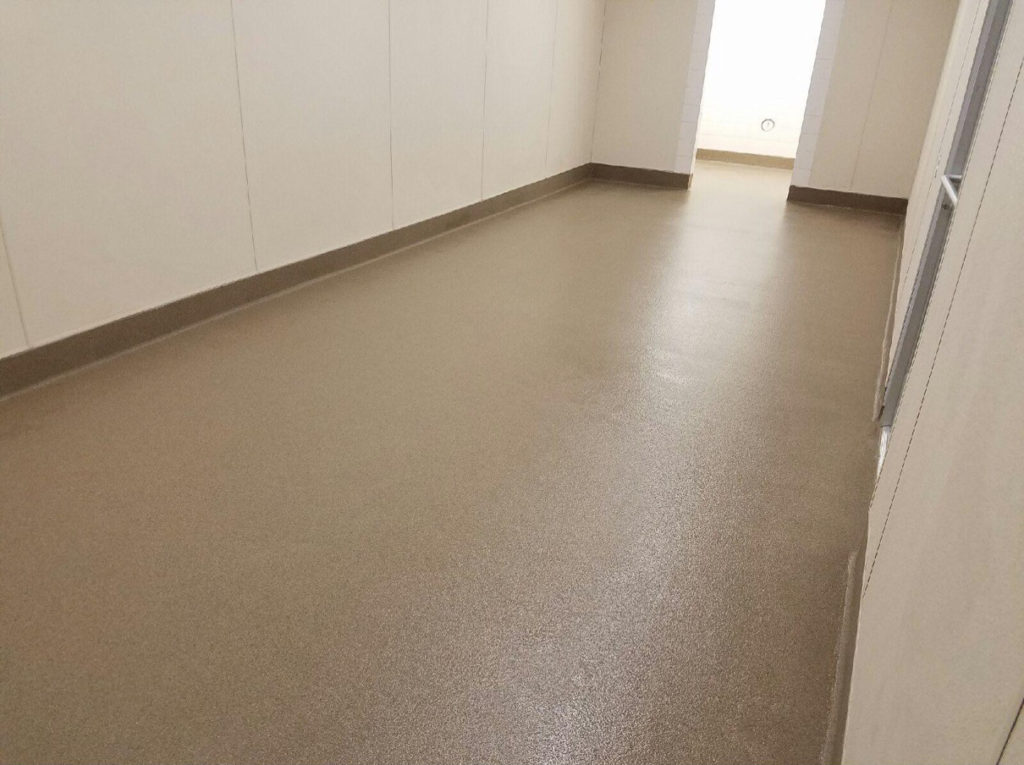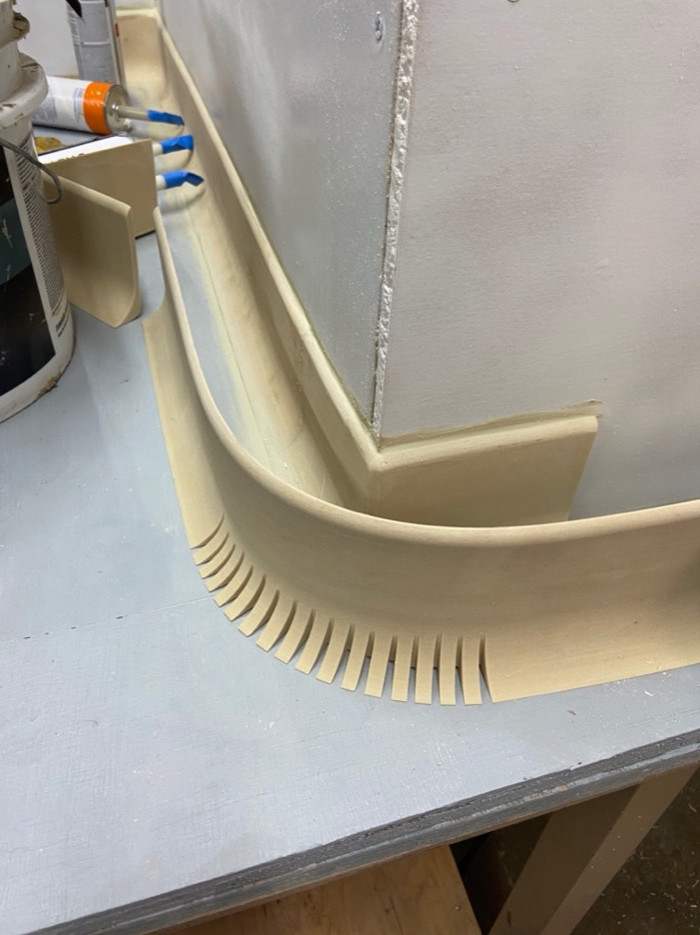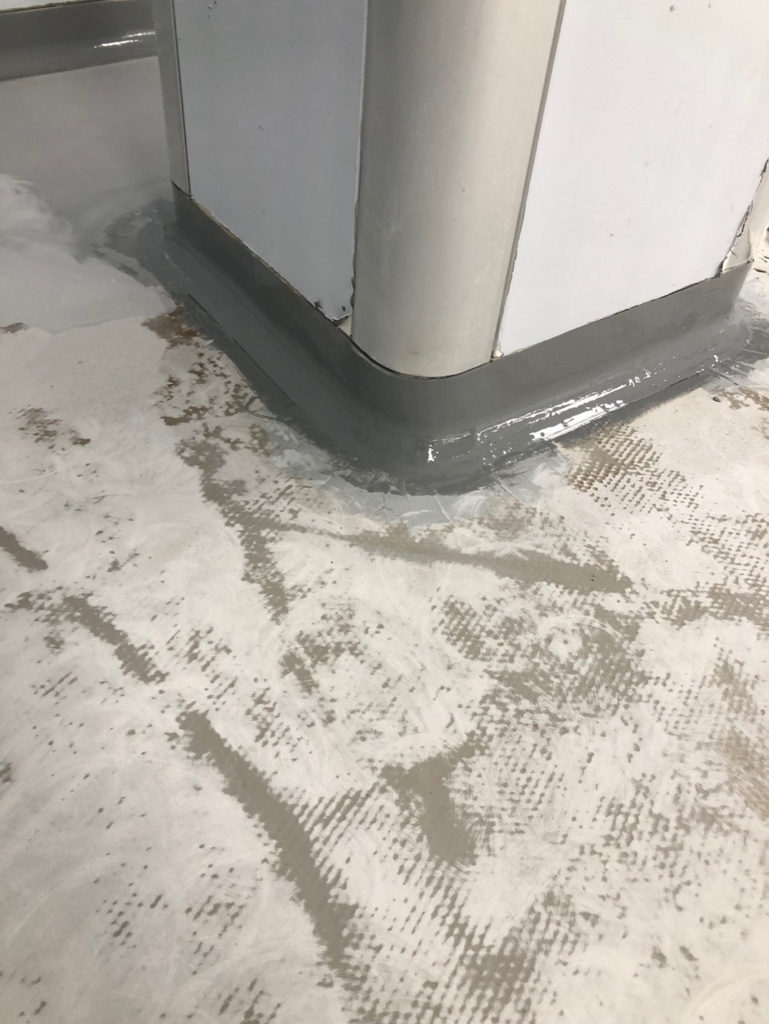We were taught to install cove base using a hand trowel and did it that way for years. It wasn’t until we were faced with over a mile of base going on pre-engineered walls with radial corners that we had to rethink our strategy.
ACC was approached in 2020 by a builder we have a relationship with about a pharmaceutical project in which the client was interested in a urethane slurry system with integral cove base. It was an exciting project that we very much wanted to be involved in.
An interesting component of the project was the modular wall system that would be installed. Base track would be attached to the floor with modular panels serving as the walls and ceilings. It appeared to be a good system for a pharmaceutical facility with numerous clean rooms. All the columns throughout the facility would also get wrapped with modular panels.
Originally, we planned on using our typical methods of applying epoxy cove base. We would epoxy prime the walls, mix quartz sand with epoxy and then hand trowel that onto vertical perimeter surfaces. We liked using a Schlueter strip to serve as the termination point. We had a fair amount of experience with this method of installing cove base but it was virtually impossible to get it “perfect,” especially inside and outside corners.

Once we gained a better understanding of the modular wall system and layout, we realized hand troweled epoxy base likely was not going to work. In addition to the number of inside and outside corners, there was a lip where the modular wall fastened to the base track which would make it very difficult to actually trowel the epoxy.
At this point, it was time for Plan B: pre-manufactured cove base. We reached out to SpeedCove who we considered one of the leaders of manufactured base for these types of applications. We also knew the preformed corners would be the solution for all the interior and exterior corners which required base. Simply attach the polyester resin cove base using a construction adhesive, paint with epoxy and problem solved!!
Well….not so quick. Of all things, the lip I mentioned before (where the wall attaches to the base track) was slightly less than four inches. This meant we had to rip each piece to the appropriate height. Additionally, all the columns which were being wrapped in modular panels had four radial corners (not 90°). We were able to solve this my making a series of cuts in the base and then patching with cabosil and epoxy and sanding. While it gave a nice appearance, it was very time consuming. Fortunately, the client agreed this work was out of scope and allowed a change order.


The manufactured base certainly provided an additional material cost but I do believe the time savings offset a lot of that cost. More importantly, the manufactured base provided a superior product and look. Since then, we have used the manufactured base in several commercial kitchens with great success. While hand troweling epoxy base is still common and effective, we have been converted to manufactured base and would recommend giving it a try.